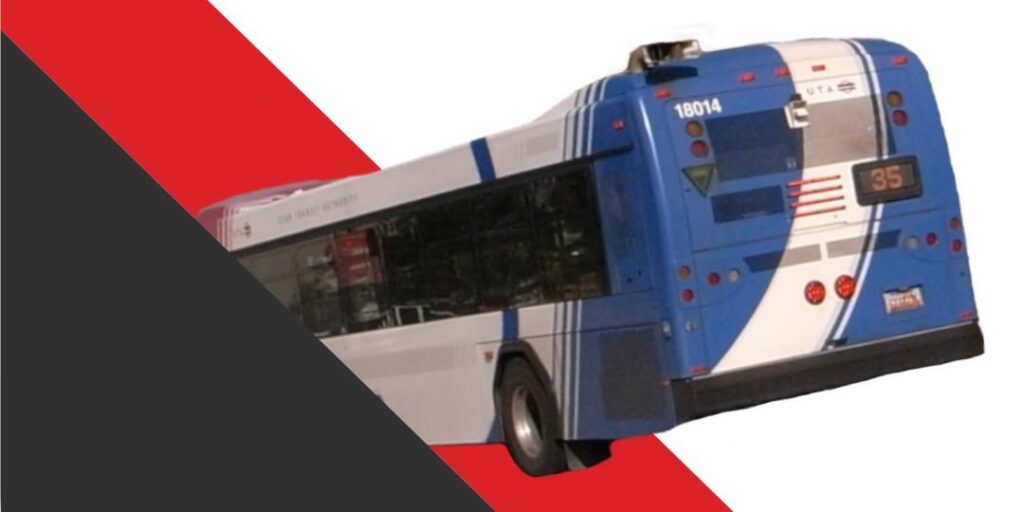
Urbanism is back in the mainstream. Cranes litter the skyline, cities are redesigning their flags, and those the previous generation would have derided as “yuppies” have rallied behind urban capitalists. In the midst of heated debates over metropolitan growth along the Wasatch Front, a handful of political staffers and upper-middle-class professionals came together to form the Utah Transit Rider Union (UTRU), a self-proclaimed advocacy group for transit statewide. This group of transit enthusiasts have taken it upon themselves to engage in transportation planning on behalf of transit and for that I applaud them, transportation planning is a practice too often done behind closed doors. For UTRU, however, that doesn’t seem to be a pressing issue. Instead, UTRU has chosen to side with urban capital, real estate agents, landlords, and commercial petty-capitalists who brew niche beers, ride bikes, and open stores named things like “Onion & Garlic,” and who rode the wave of profits following the federally backed urban renewal of the late 20th century and today seek to remake the city in their own image. Part of this particular ascendant urban capitalism is a newfound love of transit, but not the humble bus, which for a century now has been the hallmark of the working class commute worldwide. These new urbanists, quick to see their place in cities which experienced demographic inversion since the turn of the century, only have eyes for transit that includes big, flashy, and expensive infrastructure components, the sort of transit that constitutes a public capital investment large enough to attract private capital. The re-co-option of public transit by these new urbanists marks a battle over whom public transit should serve, where it should go, and what sort of city it should help make.
To help understand UTRU’s position, it seems fit to begin with what they’ve written. In a recent article on their blog, Saving MAX, author Curtis Haring shares his thoughts on the now-closed MAX bus rapid transit (BRT) route which ran up and down 3500 South. Reading their article, one would think that the MAX closed because “it didn’t really “go” anywhere,” or perhaps because there wasn’t “enough commercial and residential density to support it,” or maybe even that it didn’t have enough dedicated lanes to offer a “competitive advantage to a car trip.” After its closure, Haring laments, 3500 S is now only served by the “less frequent 35 route.” What he never once mentions, though, is that the 35 route is currently UTA’s highest ridership regular bus route, a fact which casts doubt on his entire article. How could a bus route which doesn’t go anywhere net a daily weekday average of over 3,500 boardings this August? To put that into perspective, that’s over 700 more than the MAX had at its peak in March 2017. Haring would have UTA reroute and rebrand MAX, sending it to the Tooele Technical College! No clear reason is given for why extending service to Tooele would help “Save MAX.” From what little is said, Haring seems to be under the impression that the number of college students riding a route determines its success. Far from what Haring would have you believe, the route 35 of today is a success story, its ridership is evidence of its usefulness to the residents of West Valley City, Utah’s second-biggest city. The stores, schools, and neighborhoods served by the route are the types of day-to-day locations thousands of people rely on the bus to reach. Unlike light rail and BRT projects which are “anchored” by large destinations like universities or the airport, the 35 bus is an example of how to serve the local, every day, needs of people. Why Haring sees a need to undermine the local service of the existing 35, precisely the thing that makes it work for the working class neighborhoods of West Valley City, shows just how out of touch his conception of what successful public transit is.
But misguided suggestions are not the only thing UTRU is up to. They recently put together a proposal for, what they term, a “Community Advocacy Training for Transit (CATT) Program.” With the goal of increasing “citizen advocacy,” including participation in community councils and planning commissions, the proposal outlines an educational curriculum to mint transit advocates in the mold of UTRU. But with a heavy focus on zoning and “economic potential” these advocates would quickly become advocates for developer capitalists and gentrification. UTRU outlines 15 places they aim to provide these trainings and a specific orientation they want to see each community take in their advocacy for transit. The two orientations are Access Oriented, relevant for areas with low transit service, lack of frequency, or poor coverage, and Economic Oriented, for areas they claim lack “maximum economic potential” because existing transit service “doesn’t go to where the people need it to go.” While the proposal is short on information about what Economic Oriented advocacy would entail, given the relationship UTRU maintains with the local pro-developer blog Building Salt Lake, we can assume they see fit a rigorous campaign of upzoning to allow for transit oriented development (TOD), the same sort which in Rose Park has led to the displacement of families and along the S-Line oversaw an explosion of housing prices far beyond even the enormous increase which was experienced across the valley. Of the 15 places UTRU identifies, all but one of the locations they suggest an Economic Orientation for are in the North West quadrant of the Salt Lake Valley; Salt Lake City’s west side (Rose Park/Glendale), Magna, Kearns, and Taylorsville. Again, UTRU seems blind to the fact that these cities are home to some of UTA’s highest ridership bus routes; route 35 (UTA’s highest ridership regular bus route) runs through Magna, the 217 (the second-highest ridership regular bus route) goes through Salt Lake City’s west side and Taylorsville, and the 54 and 47 (16 and 21 on the list respectively) serve Kearns. It would seem that these places don’t quite line up with UTRU’s assumptions. Far from being suburban wastelands desperately in need of capitalist intervention and TOD, these are Salt Lake’s working class neighborhoods, and UTRU is taking aim at them. In planning to orient their work in these places towards economic development, UTRU will actively be working to gentrify these neighborhoods, undermining the working class qualities of these communities and making them into places upper-class yuppies and YIMBYs want to visit.
Providing education on planning processes at the local, regional, and state levels is a worthy goal, and residents should be empowered to intervene sooner and more effectively in urban planning efforts, but to direct residents towards a model of urban development which further deepens spatial inequalities and threatens working class communities is wrong. UTRU is not the transit riders organization we need. Instead, urbanists and transit advocates should seek to understand why it is that so many working class people currently take transit, especially the bus, and work to make their rides better. I suspect that existing riders, the very people we should seek to serve and advocate for, would be far more interested in seating, shelter, and lighting at bus stops, than a new market-rate apartment complex and upscale taquería. Cities should be pushed not to upzone en-mass and cater to developer capitalists, but to instead fund sidewalk connectivity, pedestrians crossings, and improved bus stops. UTRU makes dangerous assumptions about urbanism and are charting a course that runs against the interests of the urban working class. Salt Lake deserves urbanists who will advocate for the tens of thousands of workers, mothers, immigrants, youth, and elders who are taking public transit today. Cities should be built for those who live and work in them, not those for whom urban living is a lifestyle choice.
